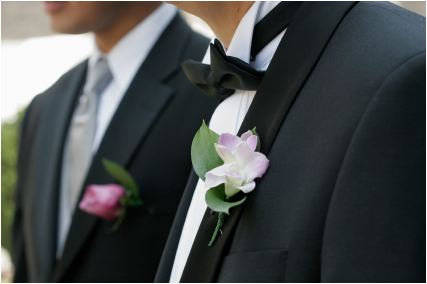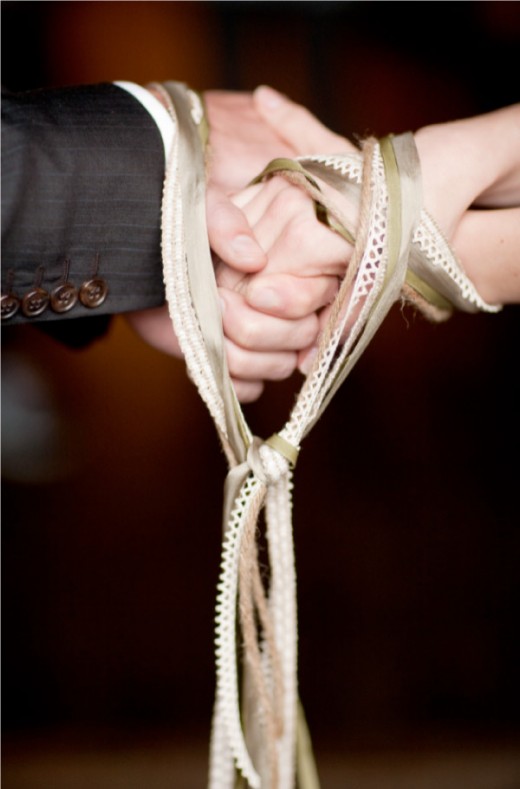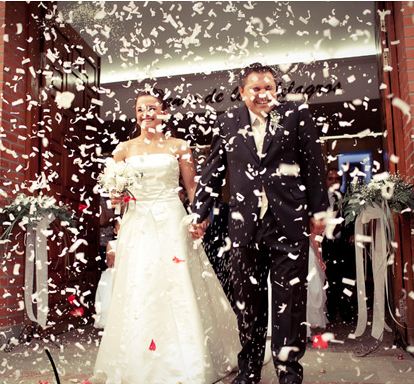Just as the ceremony, a wedding reception often follows family, religious, or cultural traditions. Here are a few interesting tidbits on the origin of some of the most well-known wedding traditions. Some of them may surprise you!


 Best Man
Originated from the German Goths, the tradition of a best man was introduced to aid a man in the search of his bride who needed to travel to neighboring countries for long distances and time, to seek out his beloved. The groom was given the right to sought out the best man on hand to accompany and safeguard his search. “Best” at those times of course meant a brave warrior able to undertake beasts and bad weather. The best man would continue to be by the groom’s side and would be the sole protector of the ring. The role of the best man then evolved into a deeper nature where he would be standing focused and well-armed during the wedding ceremony in case of any threats. Mostly, the danger would be in the case where the bride’s family would attempt to seize the bride by force and recapture her back into their kingdom. The best man would continue to respect his duties and stand outside the newlywed’s home and shelter their protection. http://www.groomsmen.com/references/term-best-man.html
Best Man
Originated from the German Goths, the tradition of a best man was introduced to aid a man in the search of his bride who needed to travel to neighboring countries for long distances and time, to seek out his beloved. The groom was given the right to sought out the best man on hand to accompany and safeguard his search. “Best” at those times of course meant a brave warrior able to undertake beasts and bad weather. The best man would continue to be by the groom’s side and would be the sole protector of the ring. The role of the best man then evolved into a deeper nature where he would be standing focused and well-armed during the wedding ceremony in case of any threats. Mostly, the danger would be in the case where the bride’s family would attempt to seize the bride by force and recapture her back into their kingdom. The best man would continue to respect his duties and stand outside the newlywed’s home and shelter their protection. http://www.groomsmen.com/references/term-best-man.html
Handfasting Handfasting is an age old tradition practiced by the Celtics. It’s a custom of performing trial marriage ceremonies similar to betrothal or today’s engagement period. It involved couples publicly declaring their intention of marrying. These days, it is still being practiced by Pagans, Neo-pagans, Wiccans and romantic couples. http://thecelt.hubpages.com/hub/Handfasting-Tradition-The-Origin-of-Tying-the-Knot
Champagne Toast A toast is a ritual in which a drink is taken as an expression of honor or goodwill. The term may be applied to the person or thing so honored, the drink taken, or the verbal expression accompanying the drink. Thus, a person could be "the toast of the evening," for whom someone "proposes a toast" to congratulate and for whom a third person "toasts" in agreement (http://en.wikipedia.org/wiki/Toast_(honor) First Dance The custom of a "First Dance" harkens back to ancient times when the "Bride Kidnapper" would show off his "hunting" skills by parading his "stolen" bride around, in front of his warrior friends, so they could see how well he had done. The feasting would begin immediately after this display. Today, the "First Dance" still traditionally marks the beginning of the reception. (http://www.hudsonvalleyweddings.com/guide/customs.htm)
Wishing Tree A wonderful Dutch tradition is the “wedding wish tree,” in which paper leaves are signed by the attendees along with personal messages, and are attached to a branch next to the bride and groom’s table in place of a guest book.
Money Dance Originating all the way back to the early 1900's, the money dance is said to have started in Poland, where it was called Pani Mloda and accompanied by a specific song. The idea of the money dance was to pin the money to the brides' veil as a way to personally give the happy couple their best wishes and one last wedding present. In a large wedding party, this was often the only time that the guests had any one-on-one time with the bride. It was the Italians that later replaced pinning the money onto the veil with placing it into a purse. http://www.ourweddingday.com/advice/Traditions/the-dollar-dance/834.aspx Tossing the Bouquet It's a suspenseful moment when the single women gather behind the bride for the bouquet toss, to see who will be the next to get married. To get the blossoms to the wallflowers, she stands on a balcony, the top of a staircase, or a chair, her back to the crowd. Breaking Tradition Save your bridal bouquet and throw a special "fortune bouquet" composed of a dozen or so small clusters of flowers bound together with a ribbon that you untie before you throw. Each mini bouquet is bundled with a different romantic fortune. (http://www.marthastewartweddings.com/225194/timeless-traditions-more-traditions)
Wedding Favors In older traditions, the bride and groom were believed to be lucky. By the 19th century, when wedding favors had reached the middle and lower social classes, favors were given as a way for the bride and groom to spread their luck and the blessings of their marriage to each of their guests. The new couple often distributed favors by hand to each person at the wedding as a way to share the blessing of their love. http://victoria-anisman-reiner.suite101.com/the-history-of-wedding-favors-a118498
Guest Book The wedding guest book was once a necessity. In days of old, everyone who attended a wedding was considered a witness and was required to sign the marriage document. Today, even though the legal requirements for witnesses have changed, the concept of a guest book remains as a wonderful remembrance for the wedding couple. (http://www.hudsonvalleyweddings.com/guide/customs.htm)
Throwing Rice Tossing rice is a custom from the ancient world that has long been popular in the United States. Everyone, even young children, can gleefully participate in the post-ceremony practice that symbolizes the showering of abundance and fertility on the bride and groom. If you don't want to use rice, you can borrow other ideas from around the world. In France people throw wheat, a symbol of bounty, after the ceremony. Italians rain candy and sugared nuts over couples, for sweetness in marriage. (http://www.marthastewartweddings.com/225194/timeless-traditions-more-traditions)
Related Posts 15 Wedding Traditions for Good Luck Indian Wedding Traditions Russian Marriage Customs Irish Wedding Traditions Cultural Wedding Traditions Mexican Wedding Traditions African-Wedding Traditions
